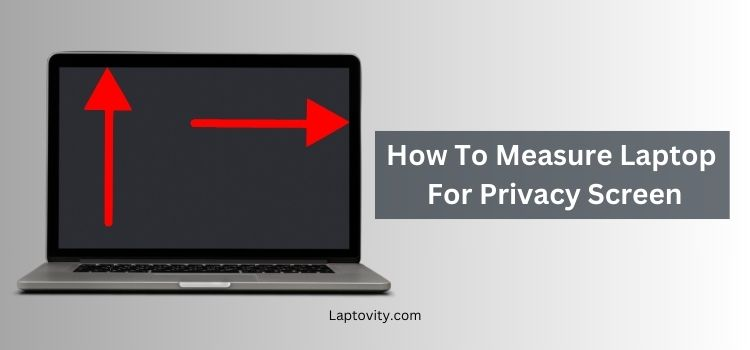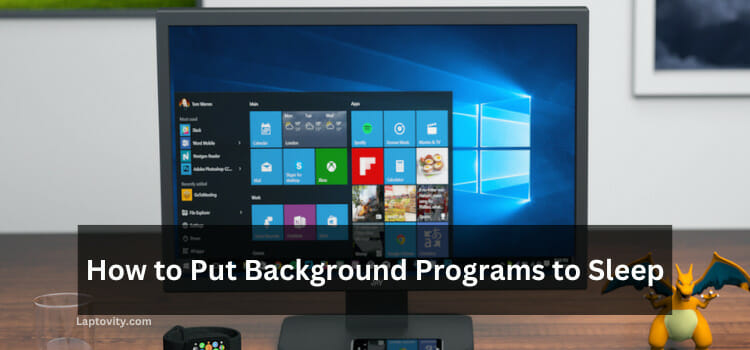Last Updated on August 2, 2025 by Nazim

If you’re concerned about privacy and need to keep your laptop’s screen safe from prying eyes, a privacy screen can be a game-changer. But before you can install one, it’s crucial to know how to measure your laptop for a privacy screen accurately. In this guide, I’ll walk you through the essential steps to measure your laptop screen and choose the right privacy filter for the perfect fit.
Why You Need to Measure Your Laptop Screen for a Privacy Filter
Before diving into the technicalities of measurements, let’s address why precise measurements matter. Privacy screens are designed to limit the viewing angles of your screen, ensuring that only you can see the display clearly. If you pick the wrong size or shape, the privacy screen could be too large, too small, or simply uncomfortable to use. Therefore, accurate measurement is the key to a precision fit.
When selecting a privacy screen, there are several factors to consider, such as your screen size, aspect ratio, and whether the screen has a raised bezel. Let’s explore how to measure your screen step by step.
Step 1: Understand Your Laptop’s Screen Size
The first thing you need to measure is your laptop’s screen size. This measurement refers to the diagonal distance from one corner of the screen to the opposite corner, not including the bezel. This is essential for choosing the right privacy screen because the screen size directly influences the privacy filter’s dimensions.
Tip: If your laptop’s screen size is listed in inches (e.g., 13-inch, 15.6-inch), you can match it with the size options available for privacy screens.
To measure the screen size:
- Place a measuring tape or ruler on one corner of the screen (usually the bottom-left or bottom-right).
- Measure diagonally to the opposite corner (top-right or top-left).
- The number you get is your diagonal measurement in inches, which corresponds to your laptop’s screen size.
For example, a 15.6-inch laptop screen will have a diagonal measurement of 15.6 inches.
Step 2: Measure the Height and Width of Your Screen
Once you have the diagonal measurement, it’s important to measure both the height and width of the display. This helps you determine the aspect ratio of your screen, which is crucial when selecting a privacy screen that will fit perfectly.
To measure the height and width:
- Measure the width by placing your ruler or measuring tape across the screen, from left to right.
- Measure the height by measuring from the top to the bottom of the screen.
The width and height measurements are important because they help you understand whether your laptop screen follows a traditional 16:9 aspect ratio, which is the most common in laptops, or if it has a different aspect ratio such as 16:10 or 4:3.
Why aspect ratio matters: If your laptop has a non-standard aspect ratio, a privacy screen designed for a 16:9 aspect ratio might not fit perfectly. Ensuring the correct aspect ratio will give you a precise fit for optimal results.
Step 3: Measure the Bezel
The raised bezel of your laptop can affect how a privacy screen fits. The raised bezel is the thin rim surrounding your laptop screen. If your laptop has a significantly raised bezel, you might need to ensure that the privacy screen you purchase can accommodate this.
To measure the bezel:
- Use your ruler to measure the thickness of the bezel around the edges of your screen.
- Check if the privacy screen manufacturer notes any information regarding edge-to-edge compatibility or if the filter requires a thinner bezel.
In most cases, the privacy filter will attach to the screen’s edge, so the raised bezel won’t interfere much. But it’s still essential to take note of it for the best possible installation.
Step 4: Selecting the Right Privacy Screen
Once you’ve got the correct measurements, the next step is to choose the privacy screen. Privacy screens are typically available in a range of sizes based on the screen diagonal and aspect ratio.
Types of Privacy Screens:
- Adhesive Privacy Screens: These screens attach directly to your laptop screen and remain in place. They’re great if you don’t mind a more permanent solution.
- Clip-On Privacy Screens: These are more versatile, allowing you to clip them onto your screen when needed easily. They’re great for portability and flexibility.
Considerations for Choosing a Privacy Screen:
- Precision Fit: Be sure the privacy screen matches your laptop’s screen size and aspect ratio perfectly. A poorly fitting screen can leave gaps, defeating the purpose of the privacy screen.
- Edge-to-Edge Coverage: Some privacy filters are designed to cover the entire screen, from edge to edge. Make sure the filter is designed for edge-to-edge coverage if you want maximum privacy.
- Matte or Glossy Finish: Privacy screens come with different finishes, including matte (anti-glare) and glossy. Consider your screen preference when making your decision.
Real-Life Example: How I Measured My Laptop for a Privacy Screen
When I recently purchased a privacy screen for my 15.6-inch MSI laptop, I found that the process was straightforward but required careful attention to detail.
I started by measuring the screen diagonally at 15.6 inches, then I measured the height and width to confirm the aspect ratio. I also checked the raised bezel on my laptop to ensure the privacy screen would fit around it without issues. After selecting a 16:9 aspect ratio privacy screen that matched my measurements, I was able to install it seamlessly. The result? A perfect fit, with better privacy, and no more prying eyes in public places.
Final Conclusion
When it comes to maintaining privacy on your laptop, a privacy screen is one of the most effective solutions. By following the steps outlined in this guide, you can ensure a precision fit for your privacy filter, providing maximum protection and a seamless user experience. Remember to carefully measure your laptop’s screen size, aspect ratio, and raised bezel to make sure you choose the perfect privacy screen.By paying attention to details like diagonal measurements and screen height, you’ll ensure the privacy screen fits securely and offers the best performance.
FAQs About Measuring Your Laptop for a Privacy Screen
How do I know the aspect ratio of my laptop?
Most laptops today use a 16:9 aspect ratio, but some use 16:10 or 4:3. To determine your laptop’s aspect ratio, divide the screen’s width by the height. For example, if the width is 13.5 inches and the height is 7.5 inches, the ratio is 16:9.
Can I use any privacy screen size for my laptop?
No, the privacy screen must match your laptop’s screen size and aspect ratio. A mismatch will result in improper fitting and reduced privacy protection.
Do privacy screens fit all laptops with the same screen size?
While screen size is a crucial factor, raised bezels and aspect ratios vary across different laptop models. Always double-check your laptop’s dimensions and aspect ratio before buying a privacy screen.
What happens if the privacy screen doesn’t fit well?
A poorly fitted privacy screen may not provide effective privacy, and it can also affect the display’s clarity. Always ensure the screen fits edge to edge for optimal coverage.

Nazim is a tech enthusiast and expert in laptops, computers, and cutting-edge technology. With a degree in Computer Engineering and experience as a Data Analyst, Nazim combines deep technical knowledge with real-world insights to help readers make informed decisions about their tech needs.


